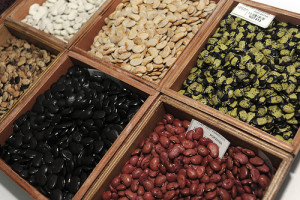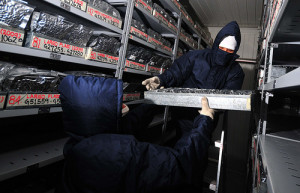Category : News
Published : April 28, 2014 - 2:07 PM
The challenges for agriculture are vast, but we do have a basic structure to build on in order to find solutions. We do have a functioning global partnership, said Marie Haga in a presentation to the General Assembly and the Economic and Social Council of the United Nations earlier this month.
Haga leads the Global Crop Diversity Trust, an essential funding mechanism to ensure the long-term conservation and use of crop diversity for food security worldwide. In short, the Trust protects one of the worlds least recognized but most valuable resources: crop diversity, the raw material for improving and adapting crops.
Partners for resilience
The formidable challenge is to ensure food security for a growing population in a more sustainable manner, under the pressures expected due to climate change.
Humanity must develop a resilient agricultural system that can tolerate changing weather conditions, that can deal with new pests and diseases, that does not exacerbate climate change and environmental degradation, and which sustainably produces sufficient and nutritious food.
This entails adapting crops to climate change. To adapt crops researchers utilize the genetic diversity in old crop varieties as well as wild plants related to crops (crop wild relatives) which contain important traits, such as drought tolerance or disease resistance that can be hard to find in modern cultivated varieties.
Achieving resilience requires major research partnership coordination to combine the collective knowledge we have of the types of traits different crops will need under climate change such as heat, drought, or salinity tolerance as well as where these traits may be found in diverse genetic resources.
Crop breeders require information and germplasm from multiple sources and countries in order to locate and use these traits to improve crops. No country is self-sufficient in this regard, so global exchange of genetic resources is vital.
The crown jewels of international agriculture
The Center for International Tropical Agriculture (CIAT) maintains a genebank at its headquarters in Colombia. With a total of more than 65,000 plant samples, this facility safeguards the worlds largest collections of beans and cassava along with their wild relatives, as well as tropical forages. These collections conserve a great wealth of the worlds agrobiodiversity and make this diversity available to the global community.
Today, thousands of improved crop varieties are growing in farmers fields that can trace their roots to CGIAR genebanks, Haga noted.
Norway where the Svalbard Global Seed Vault protects the worlds seed samples deep inside a mountain on a remote island is an important investor in CIATs efforts to collect, conserve, and enhance the use of crop wild relatives.
Thanks to contributions from the Government of Norway (MOFA), administered by the Millennium Seed Bank Partnership of the Royal Botanic Garden Kew and the Crop Trust, CIAT is helping to advance a synergistic endeavor the Crop Wild Relatives project to adapt agriculture to climate change. The project is entering a new phase to build upon existing research, capitalize extensive relationships created with experts worldwide, and to maximize the impact of these resources.
Its an honor for CIAT to be a part of this colossal global partnership. Seeds, crops, information, and tools established at the Center are being used all around the world for the benefit of our collective future, said Colin Khoury, Crop Wild Relatives project staff at CIAT.
Written by: Melissa Reichwage and reposted from CIAT
Related stories:
– CGIAR Consortium partners with Global Crop Diversity Trust to revitalize genebanks
– Study on human diets whets the appetite of global media
– Just warming up: Cassava isnt afraid of a changing climate
– This crazy world
Photos by Neil Palmer (CIAT).


